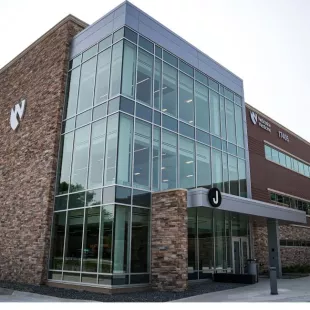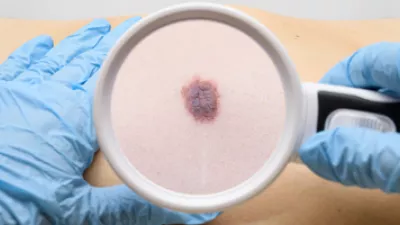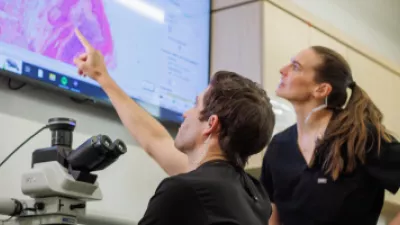Our Dermatology Program includes dermatologists who have received specialized fellowship training in Mohs and reconstructive surgery, the most effective technique for treating the two most common types of skin cancer, basal cell and squamous cell carcinomas, as well as some types of melanomas and other rare cancers. This highly specialized surgical procedure has the highest cure rates and is tissue-sparing, allowing for smallest possible surgical defects.
We offer Mohs for melanoma in selected cases, most often on the head and neck. We are among the few centers that use a special stain (immunohistochemical) that makes melanoma cells visible during surgery. This helps surgeons remove all of the tumor, lowering the risk of cancer coming back.
When is Mohs surgery recommended?
Mohs is often recommended for skin cancers that are located on cosmetically or functionally sensitive areas as well as large tumors or tumors that have returned.
What to expect
This procedure is done in our clinic in stages, under local anesthesia, which allows our doctors to remove all cancerous cells while avoiding healthy tissue and leaving the smallest surgical defect possible. Using microscopic examination, our Mohs and dermatologic surgeons can pinpoint the areas involved with cancer and selectively remove only those areas, preserving as much normal tissue as possible and minimizing scarring.
There are three main steps to Mohs surgery:
- The surgical removal of the visible portion of the skin cancer and a thin layer of tissue immediately surrounding it. This is called a “stage.”
- The tissue is processed in our on-site Mohs lab and examined under the microscope by the Mohs surgeon.
- The Mohs surgeon will repeat steps one and two until the tumor is completely removed, and the area will then be repaired or reconstructed.
The Mohs surgery technique has a 97% to 99% cure rate. Our surgeons have extensive training in skin cancer reconstructive surgery and will make every effort to obtain the best cosmetic results for you. They may also work in conjunction with other surgical specialists, such as facial plastics, oculoplastics, otolaryngology (ENT) and general plastic surgery, as needed.
Mohs Surgery Fellowship Difference
Our Mohs and reconstructive surgeons are double board certified in dermatology and Mohs micrographic surgery and have completed intensive and highly competitive American College of Mohs Surgery Fellowships. During fellowships, Mohs surgeons receive months of extensive, hands-on direction from highly qualified instructors. By choosing a fellowship-trained Mohs surgeon, you can be assured that you will receive the highest standard of quality and competency and an optimal outcome.
Our Locations
-

Dermatology Clinic at Lauritzen Outpatient Center
4014 Leavenworth St.
Get Directions
Omaha, NE 68105 -

-
How the Mohs procedure works
Mohs surgery is an advanced surgical technique used to treat basal cell and squamous cell carcinomas, removing cancer cells while allowing your doctor to avoid healthy tissue to minimize scarring.
View More -
What are the risks of Mohs surgery?
Any form of surgery will leave a scar. By removing only the tissue involved with cancer and preserving as much normal tissue as possible, the Mohs procedure tends to minimize scarring.
View More -
Preparing for Mohs surgery
Our team reviews the steps you can take to prepare for the day of your surgery.
View More -
After Mohs surgery
Our team explains what happens after your surgery.
View More

